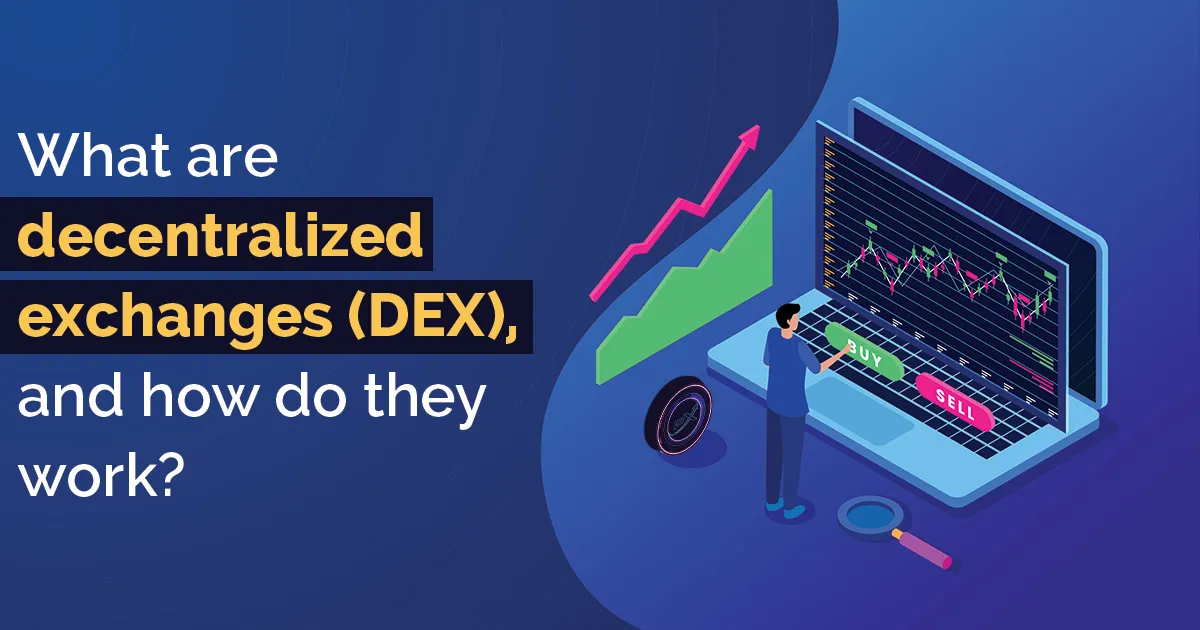
When it comes to cryptocurrency trading, there are two ways to do that - centralized and decentralized. Most of the cryptocurrency exchanges out there are centralized. In this article, we take a deep look at decentralized exchanges, including how they work and why one should use them.
What is a decentralized exchange?
A decentralized exchange or DEX is a trading platform that lets users trade cryptocurrencies directly with each other without needing an intermediary or third party to execute or validate transactions. By allowing peer-to-peer transactions, DEX removes the need to trust an intermediary with your funds or personal data, as required in centralized exchanges.
A DEX is the most pure and direct type of exchange of digital assets. It involves only two parties - buyers and sellers - who will be communicating and trading directly with each other. Not only is this way of crypto trading more secure but also it incurs less transaction cost and is comparatively more secure than centralized exchanges because of the lack of third parties.
The major difference between a centralized exchange and a DEX is in terms of how they work. A centralized exchange is any traditional exchange that is owned by someone, an entity or a business. The control is always in the hands of the exchange owner. Also, they need users to share their personal data, KYC details, etc. with the exchange as well as give control to their funds in order to trade. A DEX is completely the opposite, as there is no owner or intermediary here. All transactions are direct between traders. No need to share your personal details, even your name, with anyone. Smart Contracts are used to securely and fairly validate and execute every transaction on a DEX.
But, if there is no one to validate transactions, how do DEXs actually work? Let’s find out.
How does a decentralized exchange work?
DEXs are a good example of the real-world use of blockchain technology. They are based on blockchain and work through smart contracts. A smart contract is a blockchain-based agreement between trading parties that is set to execute automatically upon fulfillment of underlying conditions.
Based on how different DEXs work, they can be broadly categorized into the following three types:
- Automated market makers
- Order book DEX
- DEX aggregator
Order book DEXs are similar to centralized exchanges that use order matching systems. This involves smart contracts matching buy and sell orders in real-time under given criteria. The matched orders are executed by the smart contract without the involvement of any human intermediary. This ensures transactions are peer-to-peer and fully secure. The smart contract will list all open orders for specific asset pairs and then match them based on bid and ask values.
Automated market makers (AMMs) are the most common types of DEX in use today. Their smart contracts do not follow an order matching system but use a pre-funded pool of assets called liquidity pools, which are funded by other users who give liquidity in order to earn a commission (from transaction fees) for every trade. Liquidity contributors will buy and hold cryptocurrencies in order to provide liquidity to the smart contract, which will then execute trading orders using liquidity from the liquidity pool.
DEX aggregators are modern decentralized exchanges that work together with multiple DEXs to ensure ample liquidity at a time. This also helps reduce trading fees and ensures the best possible token price for traders.
A good example of the latest, feature-rich decentralized cryptocurrency exchange is PurpleX (https://purplx.io/). It’s a 100% decentralized exchange using Binance blockchain technology and offering many outstanding features, including high security, a user-friendly interface, instant swapping, and a powerful network.